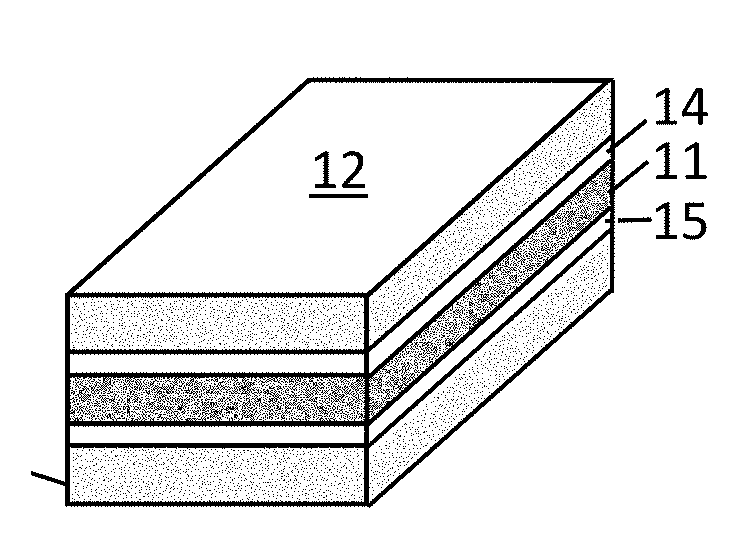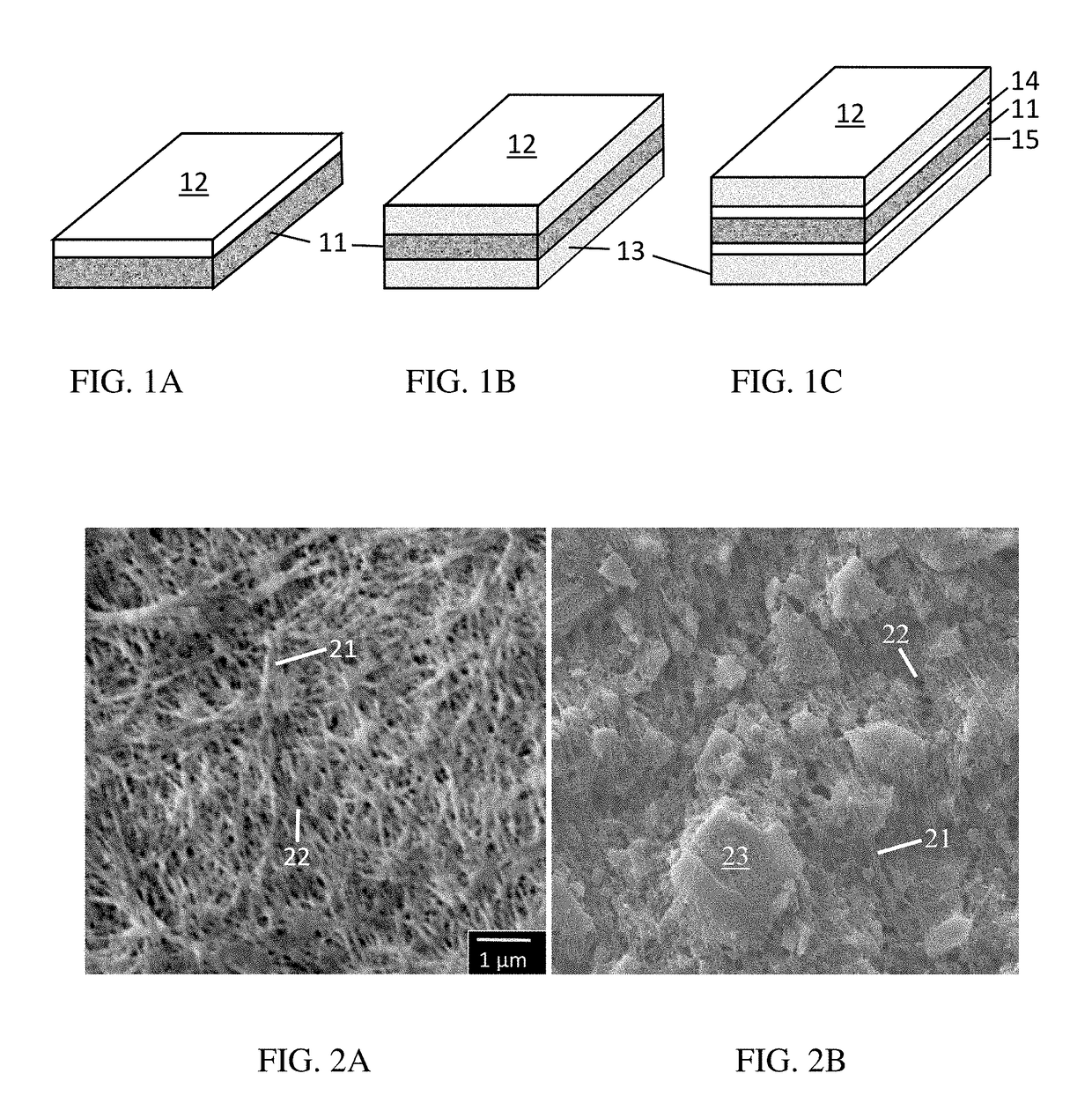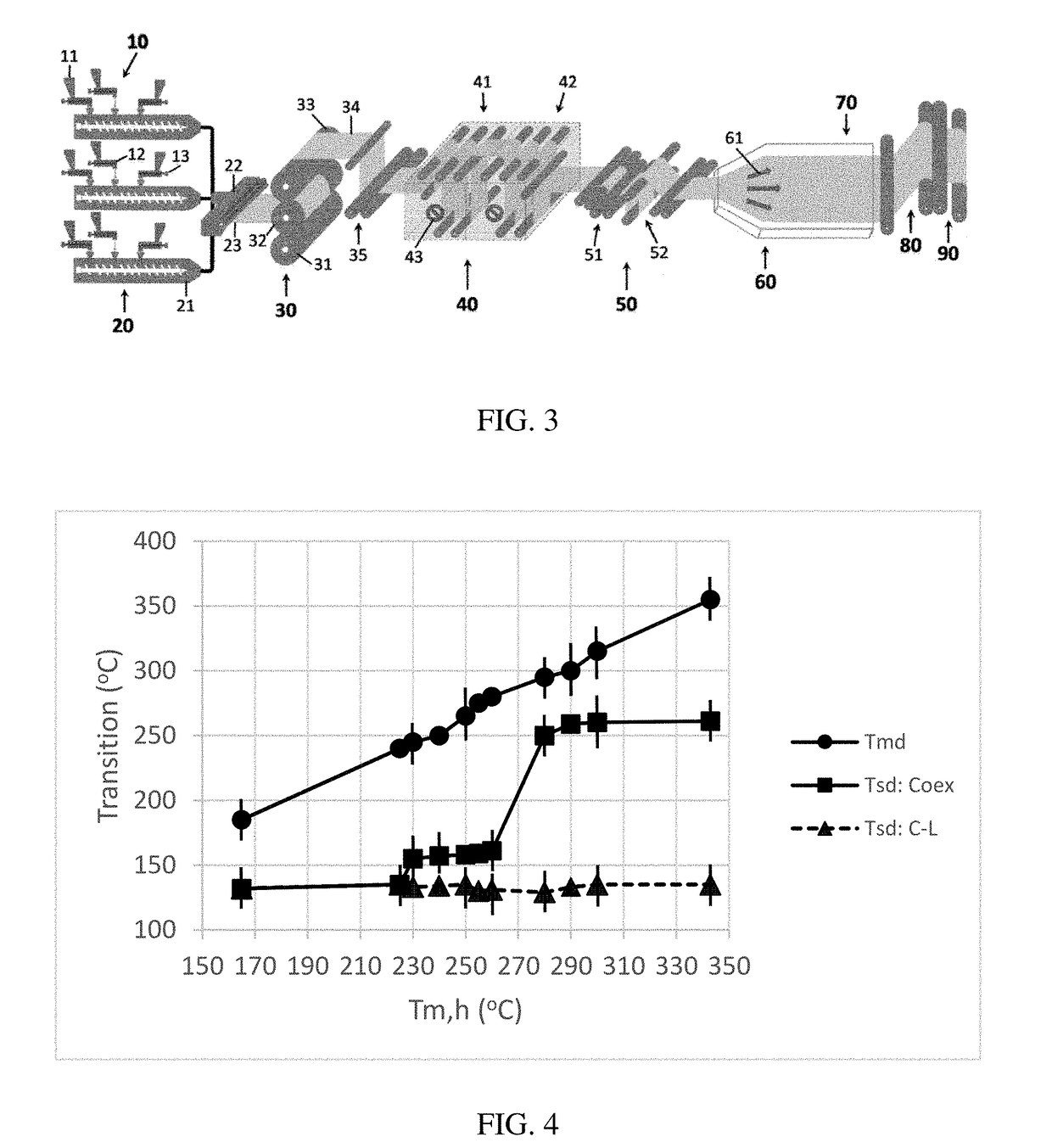Oriented Multilayer Porous Film
a multi-layer, porous film technology, applied in the direction of cell components, cell component details, electrochemical generators, etc., can solve the problems of poor heat resistance, creep and degradation, failure of the methods in creating a properly high level of open pores, etc., to enhance stress-induced hardening and orientation, improve the effect of ionic conductivity and excellent ionic conductivity
- Summary
- Abstract
- Description
- Claims
- Application Information
AI Technical Summary
Benefits of technology
Problems solved by technology
Method used
Image
Examples
examples
[0224]The oriented porous films of the present invention are further described below with reference to the nonlimiting examples. The Example films were characterized by the following test methods.
1. Test Method
[0225]Particle Properties: Mastersizer 3000 of Malvern Instrument was used to measure an average particle size and a particle size distribution of the raw materials. The intrinsic porosity of particulate materials were measured according to ASTM D 6556 with a nitrogen adsorption porosimetry (Micromeritics ASAP 2020), by characterizing a pore volume, a pore size distribution and a Brunauer-Emmett-Teller surface area (SBET). The recovery (Rφ) of particles' initial porosity incorporated into the film was calculated via Rφ (%)=(φa / φb)×100, wherein φa and φb are respectively the particle porosities after and before processing.
[0226]Thickness (t, μm): The average thickness of the film was measured by a caliper and a dial gauge thickness meter at 1 cm interval along the MD and TD of ...
examples 1-12
[0244]TABLE 2 shows the layer structure, composition and thickness of Examples (EX) 1-12. The EXs 1-12 films were all a monolayer film with a thickness of 6 to 15 μm. EXs 1-2 had a bio-based composition, respectively a wet and dry film of HDPE / UHMWPE (UPE) and β-PP / HDPE blends. EXs 3-12 all had the first polymer as a matrix with Tm≧200° C. EXs 3-7 were a dry film containing immiscible polymers and nanosorbents, while EXs 8-12 were a wet film produced from various diluents.
TABLE 2CompositionGageEXLayerMatrix (M)Porogen (P)M / P (wt %)(μm)1AHDPE / UPEVTO21 / 9 / 7062β-PPHDPE85 / 15153APETm-PP / MCM-4175 / 20 / 5154PETLCP / CNC70 / 15 / 15125PEFm-SiO2 / HDPE60 / 30 / 10156PA9TPEEK / ZSM575 / 15 / 15107PKm-PP / 13X70 / 15 / 15128APETVTO / Al2O330 / 60 / 1069PTTVTO40 / 601010PA410DMDA40 / 60611PEEK / PEIDPS / Ba2SO428 / 7 / 60 / 5812PCTFELP / UPE30 / 60 / 1012
[0245]TABLE 3 shows the properties of the Example films, i.e., porosity (φ), average pore size (dA), Gurley number (NG), MacMullin number (NM), tensile strengths (ST) in the MD and TD, and punctur...
examples 13-24
[0246]TABLE 4 shows the layer structure, composition and thickness of EXs 13-24. All the films had multiple layers with a total thickness of 7 to 20 μm. The EX 13 film was a dry 3-layer film of unfilled PO (U-PO), consisting of a PP / HDPE blend core coextruded with two β-PP skins. The EX 14 film was a 3-layer film of filled PO (F-PO) having two wet skins of 30 wt. % Al2O3. EXs 15 and 16 were a 2-layer film, consisting of the EX 8 film coated (C) or laminated (L) on one side. The wet coating contained 50 wt. % solids dispersed finely in water, comprising p-m-HDPE and Al2O3 both having an average particle size of 0.5 and 0.8 μm, respectively. The coating was applied with a gravure coater, and dried at 100° C. in a hot air oven. EX 17 was a 3-layer laminate, EXs 18 to 23 a coextruded 3-layer film, and EX 24 a 5-layer film having two maleated tie layers respectively to bond adjacent core-skin layers together. The porogens included metal oxides, zeolites, nanomaterials, immiscible polymer...
PUM
| Property | Measurement | Unit |
|---|---|---|
| porosity | aaaaa | aaaaa |
| Tg | aaaaa | aaaaa |
| particle size | aaaaa | aaaaa |
Abstract
Description
Claims
Application Information
 Login to View More
Login to View More - R&D
- Intellectual Property
- Life Sciences
- Materials
- Tech Scout
- Unparalleled Data Quality
- Higher Quality Content
- 60% Fewer Hallucinations
Browse by: Latest US Patents, China's latest patents, Technical Efficacy Thesaurus, Application Domain, Technology Topic, Popular Technical Reports.
© 2025 PatSnap. All rights reserved.Legal|Privacy policy|Modern Slavery Act Transparency Statement|Sitemap|About US| Contact US: help@patsnap.com



